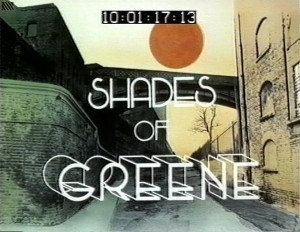Don’t Do It Ofcom!
The US networks have vandalized their prime asset. The length and placing of commercial breaks has made drama and sitcom almost unwatchable. There are five breaks an hour, all of them inside the shows. Look at this analysis of an episode of House which shows how these breaks can be positioned episode. The start of the show has a clear run of 12 minutes to the first break. But then towards the bottom of the hour, things get rough. The second break comes just four minutes after the first, and it is followed by break 3 just five minutes later. Break 4 comes after 6 minutes of drama, and break five is five minutes after that. Then you get the final six minutes of the drama.

Try writing to fit that pattern, and you’ll see just how challenging this is. The development of the story, its heart and complexity, are ruthlessly chopped up into sections that last only a scene or two. Each break is long. The second is as long as the segment it follows. Almost 20 minutes of each hour consists of interstitials (commercials, trails etc). The middle of the drama is where things get most involving (so we can be expected to wait out the breaks), but it’s also where they get more messy and complicated, involving false turns, clues that are set up for later, things viewer and character alike need to think about. It’s where things fly to pieces, only to be pulled together at the end. In short, it’s where sustained viewing would bring more pleasure. But not if you are watching on the networks. You spend just as much, if not more, time with the commercials as you do with the characters.
There’s a simple reason for this. The networks have collectively abolished any break at the head of the hour. One show rolls into another with hardly any delay. They think it will stop us switching channels… or catapult viewers watching later on PVR into other things they might like in the future. This practice can get confusing. After the highly intermittent appearance of the show you are trying to watch, suddenly something else comes on with unseemly haste (sorry if I sound like a Raymond Williams just off the boat). Watching a block of sitcoms can be a bit of a blur. One episode collides into another.
Not content with their 19 minutes of break material, including trails and channel idents, the networks have started invading the visual space of the shows themselves. A minute or two into an episode and you are liable to have an overlaid graphic at the bottom of the screen promoting an upcoming show. Some are discrete, others in-your-face animations. Channel 5 in the UK has been messing around with this, but no-one seems to care. In the US it’s an established habit. No wonder people increasingly try to find semi-legal ways of viewing network TV without the networks. Or decamp to premium cable.
The US networks have vandalized their asset by shrinking the programmes and expanding the breaks, then pushing all of the breaks inside the programme, then invading the visual space of the show itself. Now Ofcom is proposing to move the UK in the same direction. They announced (23 Feb) a year long experiment allowing an increase in break length in films and feature length drama from 7 to 12 minutes. 12 minutes is the current limit for hour-slot shows, but that crucially includes the break at the top of the hour, which all the commercial channels currently use. So the breaks within shows seem more like 7 or 8 minutes in total length. The significance of this experiment is clear. Once we have got attuned to the idea of films with 12 minutes of break material per hour, we are softened up for a move to US-style breaks. Remember the sneaky overlay experiments that Five have been trying on? No-one complains, and on they go. This time, this is a formally announced experiment with a deadline. And there is a regulator behind it. So regulate the regulator by letting them know how bad this feels. It’s in commercial TV’s long-term interests: they need not become the visual slum territory that the US networks now are. (I may sound like Newt Minnow here, but actually I’m worried this will devalue my ITV shares…). There’s an implicit deal behind commercial TV about the proportion of commercials to actual programming. We may grumble sometimes, but by and large we accept it. The US networks seem to have broken their side of that deal. Let’s hope that the UK won’t follow.





